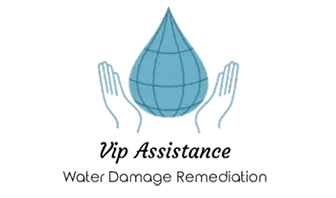Mold is a fungus that can grow almost anywhere there is moisture and organic material. In some cases, it can be dangerous to your health. According to EPA, mold can cause a variety of respiratory problems, as well as skin irritation. Taking action immediately is essential if you think you have mold in a home.
The first step is to identify the type of mold you’re dealing with. Many of us do not know the difference between mold and fungus. Mold is a fungus that can grow on wet surfaces. It’s often green, black, or white. On the other hand, the fungus is a plant-like organism that feeds on organic matter.
Read more: Mold vs. Fungus: Their Similarities and Differences.
One of the dangerous forms of mold in Granada Hills is green in color. Green mold is also known by its scientific name, Stachybotrys chartarum. This mold is often found in damp or water-damaged areas, such as basements, crawl spaces, and attics. Read on to understand green mold, its dangers, and how to get rid of it.
What Is a Green Mold?
Green mold is fungi that can grow indoors and outdoors. It thrives in moist, warm environments and can often be found in bathrooms, kitchens, laundry rooms, basements, and on or around building materials that have been water damaged. Green mold can also be found in food that has gone bad.
While green mold is not necessarily more dangerous than other types of mold, it can cause health problems for people with allergies or respiratory conditions. Green mold can also cause damage to the material it is growing on.
For example, wooden beams or drywall covered in the green mold may need to be replaced.
If you think you have green mold in your home or business, it is essential to have it removed by a professional as soon as possible.
Tips and Tricks By Professionals to Remove Green Mold
1. Identify the Source of Green Mold
It is probably the most critical step as you need to know where the mold is coming from to remove it properly. Some familiar places for mold growth in Granada Hills are leaky pipes, windows, or roofs; condensation on cooling coils of air conditioners; and damp basements or crawlspaces. You should also check for any water damage, as this can be a breeding ground for mold spores.
2. Isolate Affected Areas
After identifying and locating the source of green mold, isolate all affected areas so that the spores do not spread. You can do it by sealing off the rooms with plastic sheeting and using a HEPA filter. Experts wear proper protective gear such as gloves, goggles, and respirators while handling moldy materials.
3. Ventilate Your Home
Open your windows and allow fresh air to circulate throughout your home to help dry out any affected areas. The more quickly you can dry out these areas, the less likely new mold will grow.
4. Use a Commercial Mold Removal Product or Solution
These contain chemicals that can kill mold and mildew.
5. Remove All Material That May Have Been Affected by Mold
Any material in your home that has been affected by green mold (e.g., drywall, insulation, carpeting) needs to be removed and replaced. This is because cleaning and disinfecting these materials will be challenging, and they may continue to harbor mold in Granada Hills spores even after you’ve removed the visible mold growth.
HOW TO REMOVE MOLD FROM WOOD: EXPERT TIPS AND TRICKS IN GRANADA HILLS
REMOVING MOLD BY YOURSELF: PROS & CONS GRANADA HILLS IN GRANADA HILLS
